In the heart of every garden lies the promise of a bountiful harvest, a reward for the patience and care you’ve invested in nurturing your plants. Whether you’re a novice stepping into the world of gardening or a seasoned green thumb, understanding the art of harvesting is crucial to enjoying the fruits—and vegetables—of your labor. The act of harvesting isn’t just about plucking ripe produce; it’s about timing, technique, and knowing your plants intimately to ensure you gather them at their peak flavor and nutrition.
For those just beginning their gardening journey, harvesting can feel like a mystical process, but fear not—it’s an adventure filled with learning and delight. We’ll guide you through recognizing the signs of readiness in your vegetables, from the subtle color changes to the firm texture that signals it’s time to pick. Experienced gardeners, on the other hand, understand that even a slight misstep in the harvesting process can impact the longevity and taste of their produce. We’ll delve into advanced tips for maximizing yield and preserving the integrity of your plants, ensuring a prosperous season.
Together, we’ll explore the nuances of harvesting various vegetables, revealing tips that cater to both common and more exotic varieties. You’ll discover how to use simple tools and techniques to make the process smoother and more efficient, no matter the size of your garden. By the end of this guide, you’ll be equipped with the confidence and knowledge to harvest with success, turning your garden into a true oasis of fresh, homegrown delights. Whether you’re filling your kitchen with the aroma of freshly picked herbs or sharing your bounty with friends and family, the joy of a successful harvest is just a few steps away.
Identify Ripeness Indicators
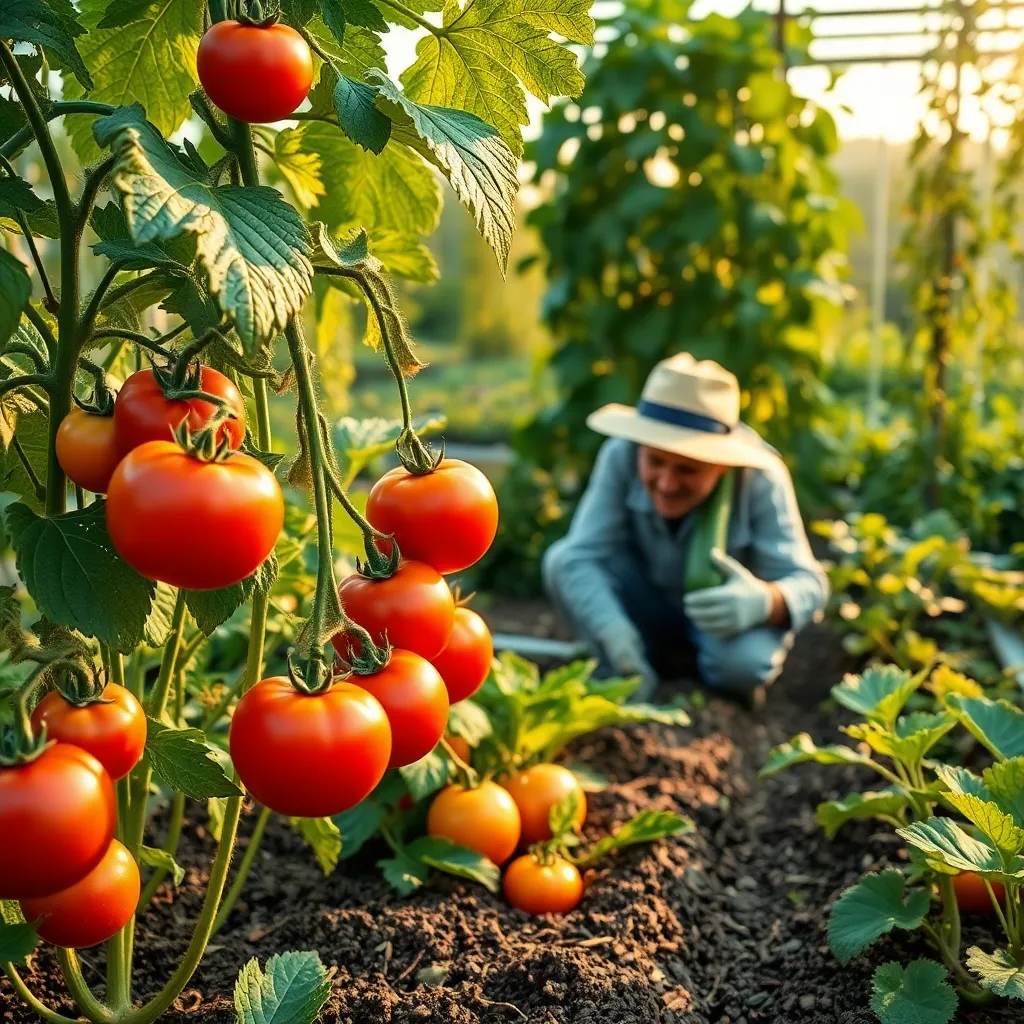
Recognizing when vegetables are ripe is crucial for harvesting at the peak of flavor and nutrition. For many vegetables, such as tomatoes, color change is a primary indicator—when they turn deep red, they’re ready to pick.
In addition to color, the texture of the vegetable can signal ripeness. For instance, cucumbers should feel firm and have a dark green color; if they’re too soft or yellowing, they’ve likely overripened.
Size is another important factor when determining ripeness, especially for vegetables like zucchini and eggplants. Harvest zucchini when they are about 6 to 8 inches long for the best taste and tenderness, while eggplants should have a glossy skin and be slightly firm to the touch.
For advanced gardeners, understanding the specific variety of a vegetable can fine-tune the harvesting process. Some tomato varieties, like cherry tomatoes, often ripen faster and should be picked as soon as they achieve full color to prevent splitting.
Gather Necessary Harvesting Tools
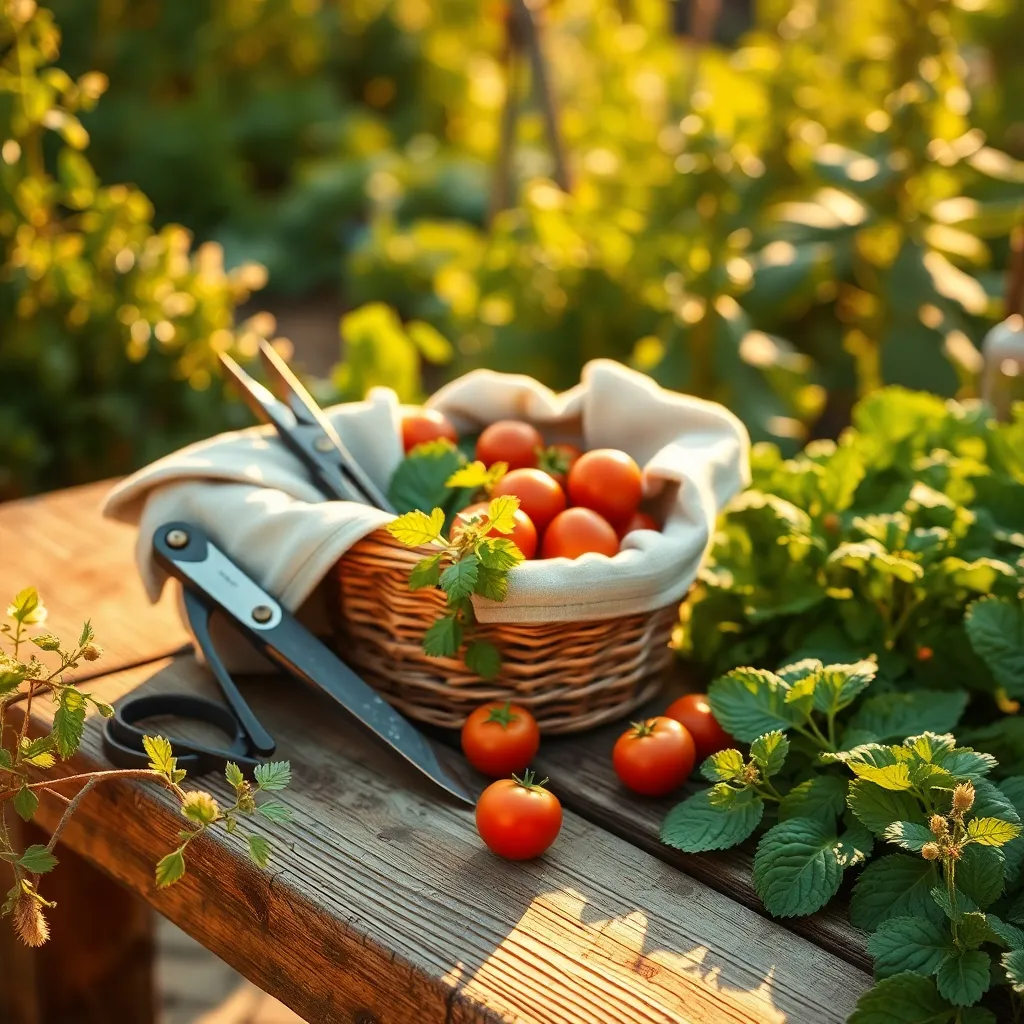
Before you begin harvesting, it’s essential to gather the right tools to ensure a smooth process. Having the correct equipment not only makes harvesting easier but also helps maintain the quality of your vegetables.
Firstly, invest in a good pair of garden scissors or pruners, which are ideal for cutting through tough stems and vines. Sharp tools help minimize damage to plants, ensuring they continue to produce throughout the season.
A sturdy basket or bucket is also crucial for collecting your harvest. Choose a container that is easy to carry and has adequate ventilation to prevent moisture buildup, which can spoil your fresh vegetables.
For root vegetables like carrots and potatoes, a garden fork is an indispensable tool. It allows you to gently lift soil without damaging the roots, making it easier to extract the produce with minimal effort.
For those with larger gardens, consider using a wheelbarrow to transport heavy loads. This can save time and effort, especially during peak harvest times when your bounty is abundant.
Pick Vegetables Gently and Carefully
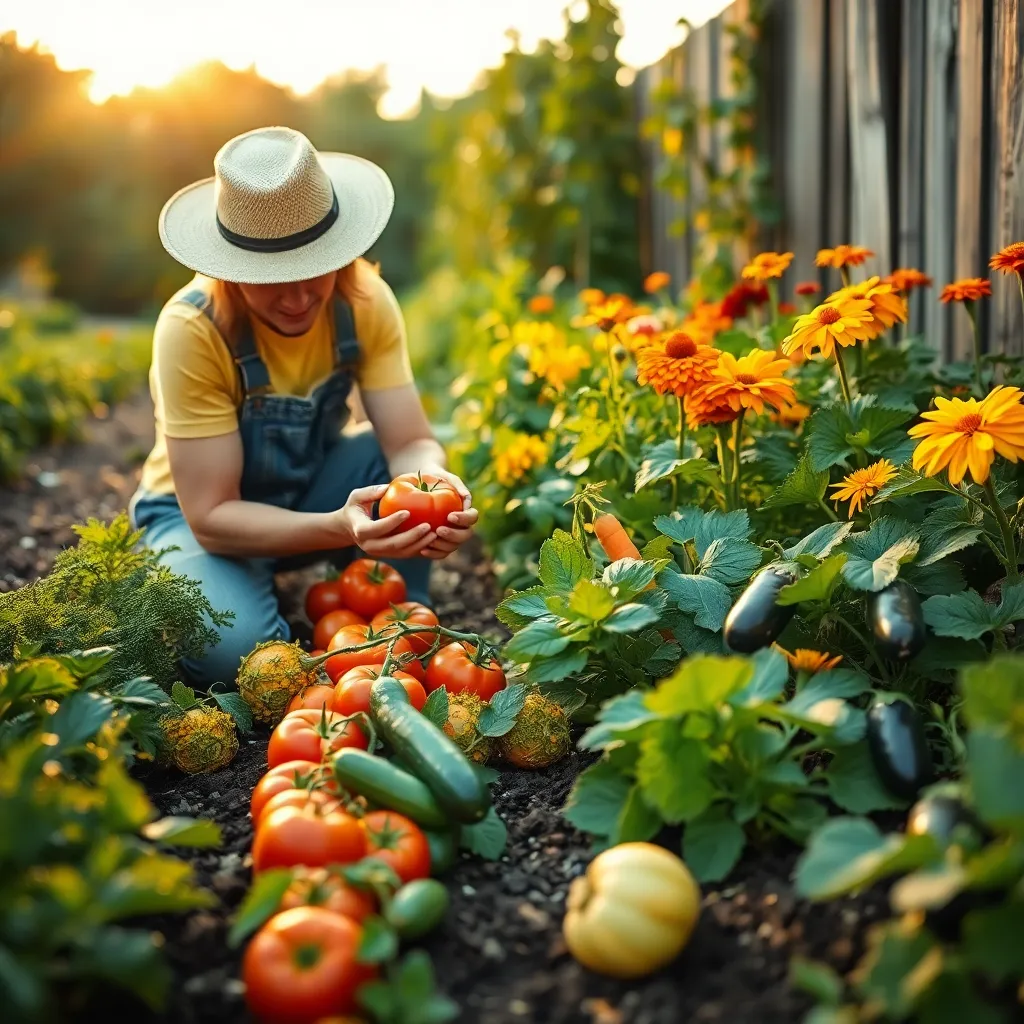
When it’s time to harvest your vegetables, handling them with care is crucial to ensure their quality and longevity. Use both hands when picking to avoid any damage to the plant, especially for delicate vegetables like tomatoes and peppers.
To prevent bruising and tearing, gently twist or cut the vegetables from the plant. For leafy greens, use scissors or pruning shears to snip them cleanly, which helps the plant continue to produce new leaves.
Consider the timing of your harvest to maximize flavor and texture. Vegetables like beans and cucumbers are best picked in the cool of the morning when they are crisp and full of moisture.
For more mature plants, inspect the stem and base to ensure they are healthy and disease-free before harvesting. This practice will help you identify any potential issues early and take steps to protect your garden’s overall health.
Sort and Inspect Harvested Produce
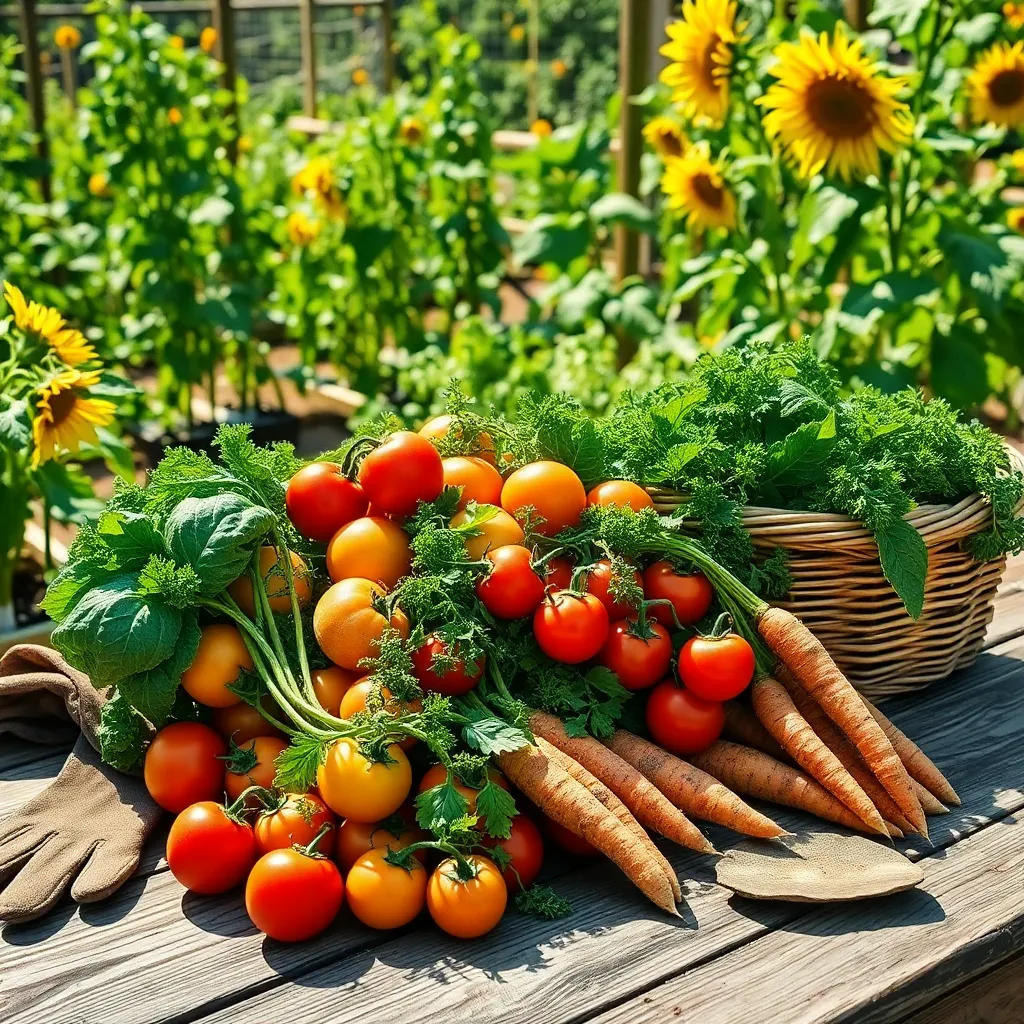
Once you have gently picked your vegetables, it’s essential to sort and inspect them right away. This step helps you ensure that only the best quality produce is stored or consumed, while damaged items are addressed promptly.
Begin by laying out your harvest on a clean surface, like a table or countertop. Examine each piece carefully for signs of rot, pest damage, or over-ripeness, as these can impact the storage life of your produce.
Separate vegetables into categories based on their condition.
- Perfectly healthy items can be stored for longer periods.
- Slightly damaged vegetables should be used sooner.
- Compost any produce that is beyond saving to enrich your garden soil.
For those growing root vegetables like carrots or potatoes, it’s crucial to brush off excess soil but avoid washing them until you’re ready to use them. Moisture can accelerate spoilage, so keeping them dry is key to extending their shelf life.
Advanced gardeners might want to consider different storage techniques based on the type of vegetable. For instance, store onions in a cool, dry place with good air circulation, while leafy greens benefit from being wrapped in a damp cloth and refrigerated.
Store Vegetables for Freshness
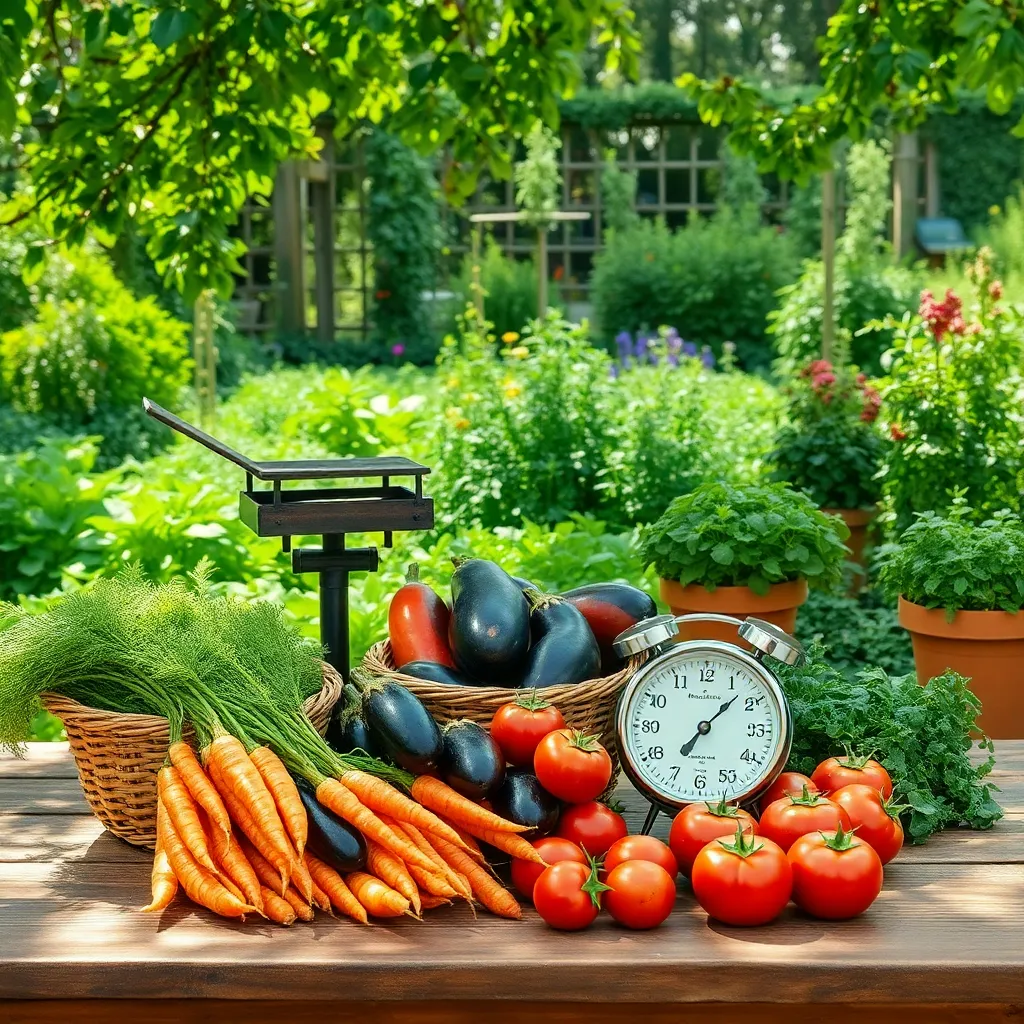
Storing vegetables properly can significantly extend their freshness and quality. Begin by gently cleaning your produce without using too much water, as excess moisture can lead to spoilage.
For most root vegetables like carrots and beets, it’s best to leave a small portion of the stem intact to prevent them from drying out. Store these in a cool, dark place like a cellar or a refrigerator crisper drawer to maintain their crispness.
Leafy greens benefit from a slightly different approach. Wrap them loosely in a damp paper towel and store in a perforated plastic bag in the fridge to keep them fresh for longer.
Advanced gardeners can use vacuum sealing to extend the shelf life of their vegetables significantly. This technique removes air and reduces the risk of mold and bacterial growth, making it a great option for those with a bountiful harvest.
Conclusion: Growing Success with These Plants
As we’ve explored in “How To Harvest Vegetables,” nurturing relationships is akin to tending a garden. First, recognize the importance of timing, as knowing when to address issues can prevent them from escalating. Second, remember the value of communication, much like the essential role of sunlight in growth. Third, understand that patience is crucial, as relationships, like plants, require time to mature. Fourth, embrace adaptability, adjusting your methods as needed to suit changing circumstances. Lastly, prioritize consistent care and attention, ensuring the relationship remains vibrant and healthy.
Your immediate step? Choose one relationship in your life to focus on today. Start with a conversation, or simply spend quality time together, nurturing the connection with intention.
As you embark on this journey of growth and connection, save this article for easy reference, ensuring you have these insights at your fingertips whenever you need a reminder.
Remember, successful relationships are built on consistent effort and a willingness to grow together. With these tools in hand, you’re well on your way to cultivating flourishing, meaningful connections. Embrace the journey, and watch your relationships thrive.


